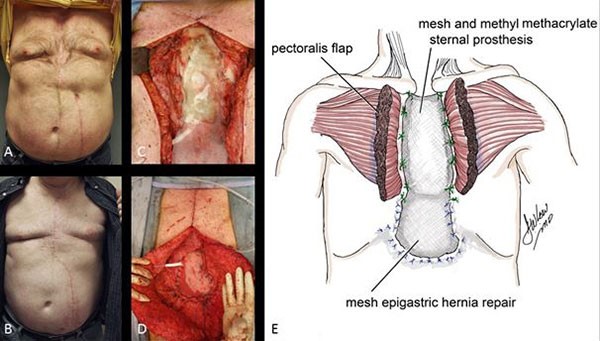Figure 3. Gamma probe being used to determine ex-vivo radioactive counts of removed parathyroid tissue
For localization of ectopic tissue to be considered successful, the ex-vivo count of excised tissue should be 20 percent or more of the initial background count. In our case, the background count was 147, and the ectopic tissue had a count of 62 (greater than 20 percent of our background), indicating successful localization and removal of tissue. Intraoperative parathyroid hormone levels were then sent at 5, 10, and 15 minutes postexcision and found to be 22, 15, and 13 pg/mL, respectively, indicating surgical cure. Hemostasis was confirmed and a 24 French rigid chest tube was placed. The patient stayed overnight and was discharged home the following day. The patient followed up in clinic one month postoperatively. Labs showed calcium 9.6 mg/dL and PTH of 23.4 pg/mL, and he reported resolution of symptoms.
Discussion
Although most cases of PHPT are due to a single adenoma and amenable to established cervical approaches, 6 to 30 percent of cases can be attributed to ectopic mediastinal glands that are not accessible through standard methods due to their location in the thorax.1 Sternotomy was the initial approach to these mediastinal glands, and although highly effective, incurred longer hospital stays and increased risks. An alternative approach utilized for removal of ectopic glands is VATS. This method has demonstrated successful outcomes, shorter hospital stays, and fewer complications compared to sternotomy.1,2 Since the introduction of the da Vinci robot, surgeons have also begun using this technique for parathyroidectomy. Although there is extensive literature regarding various approaches for cervical parathyroidectomy using the robot, there are limited reports on the use of the robot for mediastinal parathyroid removal.3 In this case report, we detailed the use of radio-guided approach with robot-assisted surgery for removal of an ectopic mediastinal parathyroid gland. To our knowledge, this is the first reported case utilizing all of these technologies.
Both VATS and robotic approaches have been detailed for conventional parathyroidectomy. Limitations of thoracoscopic approaches include two-dimensional viewing, restricted degree of instrumentation mobility, and difficulty with field alignment and stabilization of the camera. In comparison, the robotic approach allows for increased surgeon dexterity, a three-dimensional view of the surgical field, and better camera-field-instrumentation alignment.3 There is only one report describing the use of the robotic approach for ectopic parathyroid glands.4 Our study utilizes the same approach; however, we also implemented use of the gamma probe to help guide localization during surgery, which has not been previously described. Use of radio-guided parathyroidectomy eliminates the need for frozen sections and helps localize difficult to find glands.1 Radio-guided techniques have been shown to be highly effective for resection of parathyroid glands in the neck.5,6 This technique can be particularly helpful in the case of ectopic glands, where dissection may be complicated due to gland location in an uncommon site.
Conclusion
Ectopic mediastinal parathyroid adenomas are not an uncommon cause of PHPT. We present a case of a 58-year-old man with mediastinal parathyroid gland and PHPT who was treated surgically using radio-guided robotic parathyroidectomy. This demonstrates a novel approach using radio-guided technology and the robot to identify and remove ectopic parathyroid glands.
Lessons Learned
PHPT due to ectopic mediastinal glands occasionally requires an approach from the chest rather than the neck. Gland location in an unfamiliar area can complicate localization during the procedure. Radio-guided robotic parathyroidectomy allows for easier localization and maneuvering during the procedure.
Authors
Shelby L. Bergstresser
Department of Surgery
University of Alabama at Birmingham
Birmingham, AL
Benjamin Wei, MD
Department of Surgery
University of Alabama at Birmingham
Birmingham, AL
Pradeep G. Bhambhvani, MD
Department of Surgery
University of Alabama at Birmingham
Birmingham, AL
Herbert Chen, MD
Department of Surgery
University of Alabama at Birmingham
Birmingham, AL
Correspondence
Dr. Herbert ChenUAB Department of Surgery1808 7th Avenue South, Suite 502Boshell Diabetes BuildingBirmingham, AL 35233Phone: (205) 934-3333Email:
herbchen@uab.eduDisclosure Statement
The authors have no conflicts of interest to disclose.
References
- Weigel TL, Murphy J, Kabbani L, Ibele A, Chen H. Radio-guided thoracoscopic mediastinal parathyroidectomy with intraoperative parathyroid hormone testing. Ann Thorac Surg. 2005;80(4):1262-1265.
- Fama F, Berry MG, Linard C, Gioffre'-Florio M, Metois D. Successful unilateral thoracoscopy for bilateral ectopic mediastinal parathyroidectomy. Thorac Cardiovasc Surg. 2010;58(3):187-189.
- Brunaud L, Li Z, Van Den Heede K, Cuny T, Van Slycke S. Endoscopic and robotic parathyroidectomy in patients with primary hyperparathyroidism. Gland Surgery. 2016;5(3):352-360.
- Ismail M, Maza S, Swierzy M, et al. Resection of ectopic mediastinal parathyroid glands with the da Vinci robotic system. Br J Surg. 2010;97(3):337-343.
- Chen H, Mack E, Starling JR. A comprehensive evaluation of perioperative adjuncts during minimally invasive parathyroidectomy: which is most reliable? Ann Surg. 2005;242(3):375-380; discussion 380-373.
- Chen H, Mack E, Starling JR. Radio-guided Parathyroidectomy Is Equally Effective for Both Adenomatous and Hyperplastic Glands. Ann Surg. 2003;238(3):332-338.


